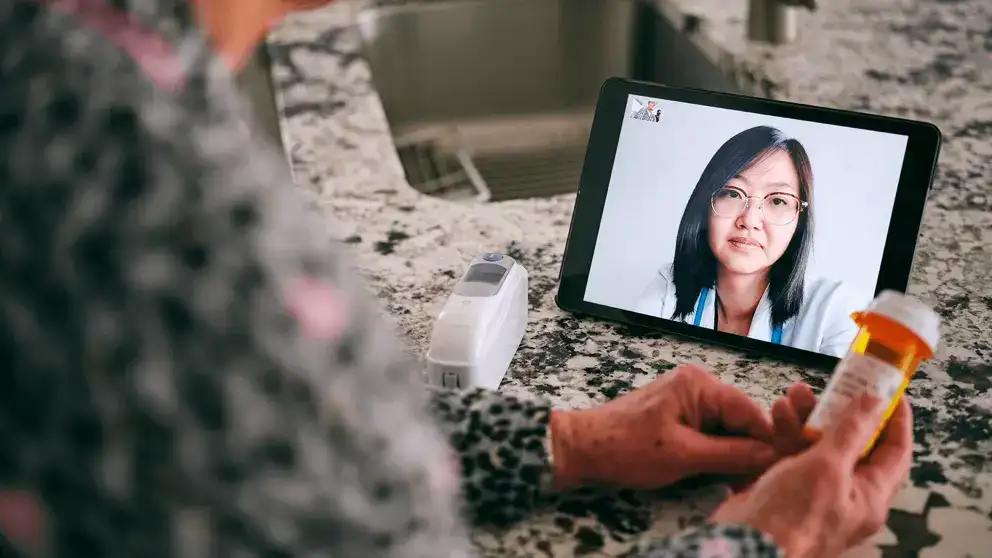Many healthcare providers have increased virtual care during the COVID-19 pandemic. Also known as telemedicine, virtual care is an alternative to in-person appointments at your doctor’s office or clinic.
What do we mean by virtual care? It’s a healthcare session between a healthcare provider and a person with a health issue, which takes place with each person in a different location, like a home or clinic. It uses technology to connect them – such as phone or computer with or without video-conferencing.
Jennifer Monaghan had a stroke eight years ago. Her recovery included regular video appointments with an occupational therapist. “My therapist was in Ontario and I was in British Columbia,” says Jennifer. “I never did meet her in person, but we developed a strong rapport.”
Jennifer is one of several people living with stroke who helped the team at Canadian Stroke Best Practices Recommendations develop a checklist to help people manage virtual appointments.

My therapist was in Ontario but I was in British Columbia.
Jennifer’s advice for anyone who might be nervous to try telemedicine: “You might have challenges using the technology at first, but you will soon find it feels natural.”
Here are some tips from the checklist to help you get the most out of a virtual visit with your doctor.
How to prepare:
- Ask your healthcare provider how much space you will need for your session.
- Plan your meeting space. Consider privacy and confidentiality, good lighting, minimal background noise and distractions (such as televisions, radio, pets). Ensure that the space is clear for you to safely move around for assessments and rehabilitation (remove tripping hazards such as loose rugs or cords).
- Have glasses, hearing aids, communication devices, or other accessibility devices with you.
- Have someone else available to participate in the session with you if possible (such as a family member, caregiver or trusted friend), following safe physical distancing and public health measures.
- Gather information you will need for every session: health card, current medication list, pharmacy name, location and phone number, and health data such as recent blood pressure readings or glucose levels.
- Write down your list of concerns and questions and have a pen and paper to make notes.
During the session:
- Let the healthcare provider know if you feel unsafe, uncomfortable, unwell, or have any concerns with how the session is going. You can ask to end the session at any time.
- Ask questions to make sure you understand all information, instructions, and any changes to your medications that you are given. Don’t be afraid to repeat back and test your understanding.
Technology tips:
- When booking, ask which applications or programs your healthcare provider will use and download them before your session.
- Ask if there is someone that you can contact for technical support, if needed.
- Know how to connect with your healthcare provider to cancel or reschedule the session or if the internet goes down.
- Test your microphones, speakers and webcam ahead of time. Request a test call, if available, to be sure everything is working.
- Ensure that your phone or computer is charged and that you have access to a reliable internet connection throughout your session.
For more details, download the 2020 Virtual healthcare checklist.
Related information
- Latest information on COVID, heart disease and stroke.
- More resources for people living with stroke

